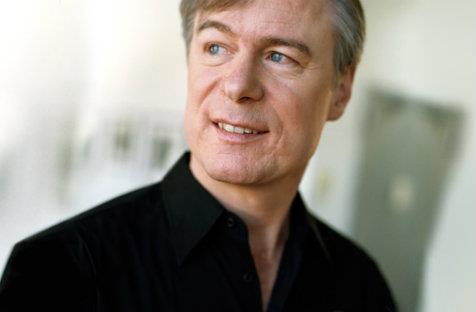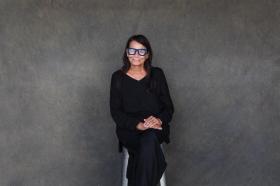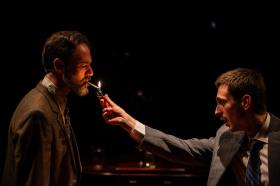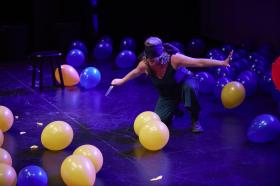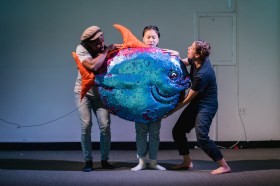It’s been an interesting process, this appointment of a new chief conductor for the Sydney Symphony. It’s somewhat akin to taking that special someone home to meet your parents, or you going to their home to meet their parents, or you (or they) meeting their (or your) friends. Or perhaps it’s like a new neighbour moving across the street into a well-established community. Perhaps even like a new contestant inserting themselves midway into a reality show. (No, let’s stick with the parent metaphor.) Because there’s a deep sense of auditioning going on. We, as an audience, are suitably concerned, for change is rarely a wholly welcome thing. We might ask David Robertson (currently titled ‘chief conductor designate’), over an awkward shiraz and conversationally poor fettuccine carbonara, what exactly his intentions with our daughter (that is, our symphony) are. Will he treat her as we would want her to be treated? And what plans does he have for himself, hmm? Has he got a lot of drive, for instance? A lot of new ideas? Many of these questions, after a rather mercurial performance of Verdi’s Requiem (Robertson was, after all, polite enough to bring a gift to the meeting) were answered after the concert had concluded.
It was the Northern Foyer – that home for the majority of pre-concert talks the Sydney Symphony gives – that we were invited to, to hear managing director Rory Jeffes ‘in conversation with David Robertson’. It was an entertaining, if a little impotent, affair, as we learnt of Robertson’s great plans for the orchestra without him giving us a single specific piece of information – the new season being kept strictly confidential until its launch in a month or so. But we learnt that the orchestra itself, for instance, when asked what new chief conductor it would prefer when Vladimir Ashkenazy left, were quite unanimous in their choice of Robertson.
And we learnt that Robertson was very enthusiastic about his upcoming tenure, as he was impressed by the Sydney Symphony’s eagerness to try new things whole-heartedly. (One anecdote he told was about the upcoming concert performance of Wagner’s opera The Flying Dutchman, which is to feature some high-tech video projections on the Concert Hall’s walls. He himself was eager to go down the more expensive route – for the projection designer told him that they could do it cheap, but have it not as good, or they could spend the money and have an amazing experience – and had constructed a checklist ready to bombard the Sydney Symphony management with reasons why the more costly option should be adopted. Yet when he approached them the management agreed to the higher cost straight away. ‘But can I at least tell you what was on the checklist?’ he said. He mentioned, in contrast to this, that the St Louis Symphony orchestra, where he has been music director since 2004, has a nickname for the sixth floor of their office building, where all the administrative staff reside – ‘the place where fun goes to die’.) So it would seem, at least, that both parties have made a good choice, but we will know more later.
There was a concert, too, for those of you who may have forgotten. Verdi’s Requiem is one of those massive works that come with a suitcase full of expectations of being ‘epic’, ‘loud’, and ‘highly populated’. Two choruses – the Sydney Philharmonia Choir (musically directed by Brett Weymark) and the Tasmanian Symphony Orchestra Chorus (chorusly mastered by June Tyzack) – were involved. Four soloists surrounded conductor Robertson centre-stage, too – soprano Erin Wall (replacing Amber Wagner who ‘had to withdraw from these performances for health reasons’), mezzo-soprano Olesya Petrova, tenor John Daszak, and bass Ain Anger. And a bounty of musicians surrounded all of that, with trumpets taking to the top of the boxes on occasion.
It is a testament, then, to both Verdi and Robertson, that the quieter moments in this monolith of a piece work rather well. Unlike the 1812 overture, for instance, where everyone is merely waiting for the cannons to start exploding, the Requiem has much to offer in addition to its loud Dies irae moments that most in the audience would recognise. The strength of the soloists was a prime reason for this, too, as they were quite compatible, especially Wall and Petrova’s duet midway through the Dies Irae sequence.
Robertson himself, as we have seen in past flirtations with the Sydney Symphony, is very good at bringing out the colours from an orchestra and making sure the audience hears them all. So in a piece such as this, where it could so easily descend into a mishmash of movements interspersed with famous parts, Robertson has found a way to keep it, for the most part, interesting throughout.
The choruses, too, were in fine form, with their fugues complicated but crisp (as all fugues should be), while their other moments – such as the apocalyptic screams of the Dies Irae – were quite affecting.
This concert wasn’t the best to have been heard this year, but if its quality is sustained, Sydney audiences will hopefully not be disappointed with the new chief and his new directions.
Rating: 4 stars out of 5
Verdi’s Requiem
Sydney Symphony
Sydney Philharmonia Choir, TSO Chorus, Erin Wall (soprano), Olesya Petrova (mezzo-soprano), John Daszak (tenor), Ain Anger (bass), David Robertson (conductor)
Giuseppe Verdi – Messa da requiem (Requiem Mass)
Concert Hall, Sydney Opera House
10 July
